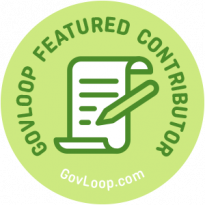In the fast-paced and high-stakes world of government leadership, supervisors and executives face immense pressure. From managing teams to navigating bureaucratic challenges, the demand for efficiency, responsiveness, and emotional resilience is at an all-time high. Mindfulness has emerged as a powerful tool that enhances decision-making, reduces stress, and fosters a positive work culture.

As government organizations look ahead to 2025 and beyond, mindfulness will be a crucial component in building resilient, emotionally intelligent, and effective leaders.
How Mindfulness Benefits Government Leaders
Improves Decision-Making
Government leaders frequently make high-stakes decisions that impact policies, communities, and operations. Mindfulness enhances this process by:
- Increasing focus and clarity, allowing leaders to process information more effectively.
- Reducing impulsivity and reactivity, promoting thoughtful and deliberate decision-making.
- Strengthening cognitive flexibility, enabling leaders to consider multiple perspectives before reaching conclusions.
Reduces Stress and Prevents Burnout
Government officials often operate under intense workloads, tight deadlines, and high public scrutiny. Mindfulness can help mitigate stress by:
- Lowering cortisol levels, reducing stress and preventing burnout.
- Helping leaders maintain emotional composure in difficult situations.
- Allowing for better work-life balance, ultimately improving job satisfaction and retention.
Enhances Emotional Intelligence and Team Morale
Mindful leadership fosters self-awareness, empathy, and strong communication skills, which directly improve workplace culture by:
- Encouraging compassionate leadership, leading to higher employee engagement and job satisfaction.
- Creating a positive work environment, where employees feel valued and respected.
- Strengthening team collaboration and trust, reducing conflicts and misunderstandings.
Mindfulness in 2025 and Beyond: What Government Leaders Should Do
To successfully implement mindfulness in government organizations, leaders should:
- Incorporate mindfulness training into leadership development programs.
- Encourage short mindful breaks during meetings or high-stress moments.
- Leverage digital tools and apps such as Headspace, Calm, or Insight Timer to support employees.
- Develop policies that promote workplace well-being, such as flexible work schedules or stress-management resources.
- Partner with experts in mindfulness and mental health to integrate these practices at an institutional level.
Implications for the Future of Government Leadership
Mindfulness is more than just a trend — it is an essential skill for modern leadership. As the global workforce becomes more digital, decentralized, and fast-moving, leaders who cultivate mindfulness will:
- Make better decisions under pressure
- Reduce employee turnover and burnout
- Foster inclusive, high-performing teams
- Improve communication and cross-agency collaboration
By 2025, government organizations that embrace mindfulness will see tangible benefits, including increased productivity, reduced absenteeism, and stronger leadership effectiveness.
Conclusion
Mindfulness is no longer just a personal wellness practice — it is a critical leadership tool that can improve government efficiency, reduce stress, and enhance decision-making. As government agencies navigate an increasingly complex and fast-changing world, incorporating mindfulness practices will be key to fostering stronger leaders, healthier workplaces, and better governance.
Dr. Rhonda Farrell is a transformation advisor with decades of experience driving impactful change and strategic growth for DoD, IC, Joint, and commercial agencies and organizations. She has a robust background in digital transformation, organizational development, and process improvement, offering a unique perspective that combines technical expertise with a deep understanding of business dynamics. As a strategy and innovation leader, she aligns with CIO, CTO, CDO, CISO, and Chief of Staff initiatives to identify strategic gaps, realign missions, and re-engineer organizations. Based in Baltimore and a proud US Marine Corps veteran, she brings a disciplined, resilient, and mission-focused approach to her work, enabling organizations to pivot and innovate successfully.





Leave a Reply
You must be logged in to post a comment.